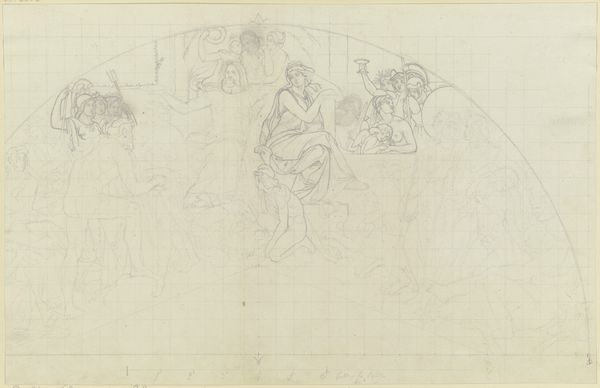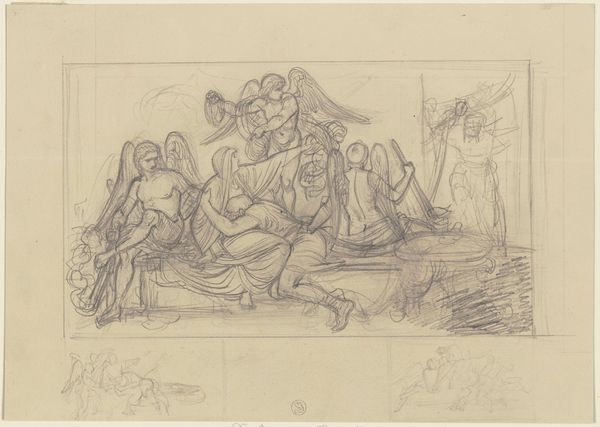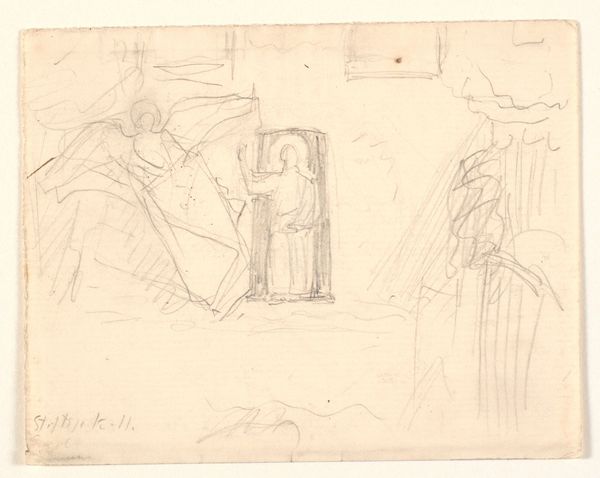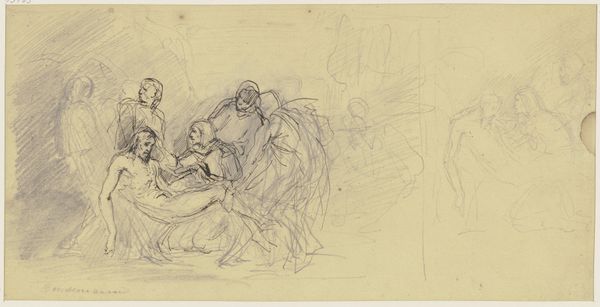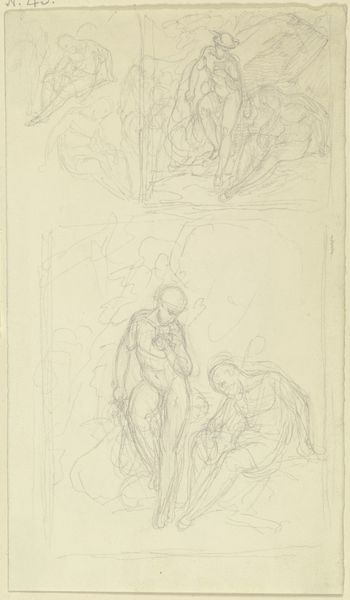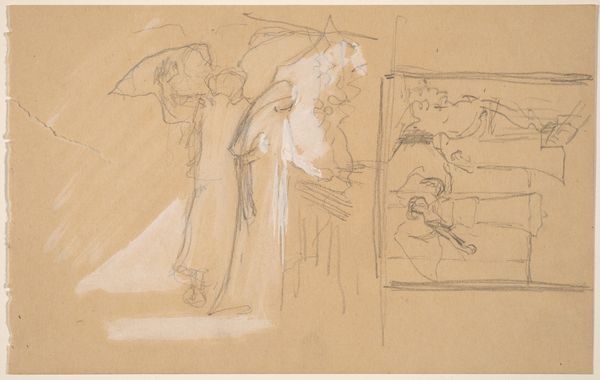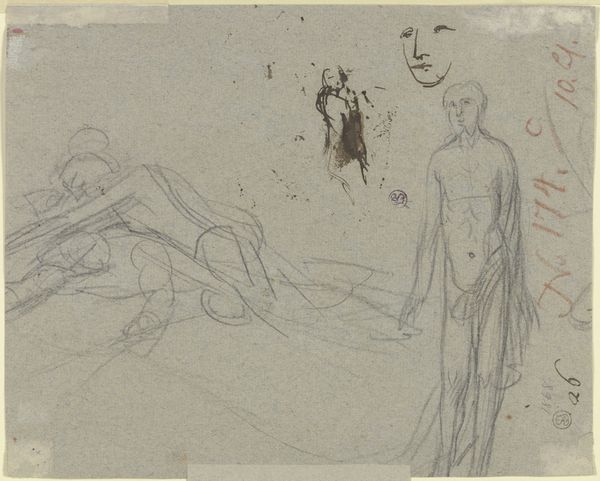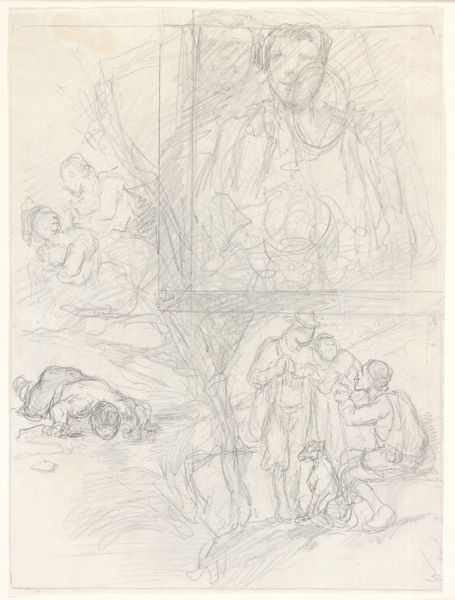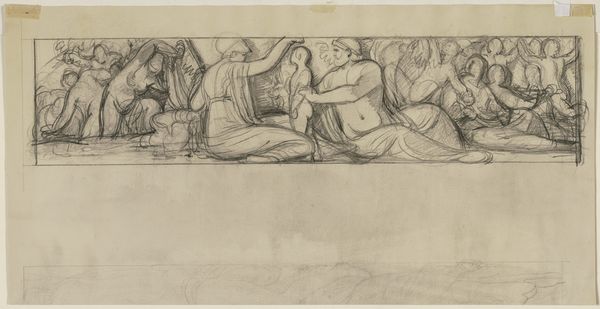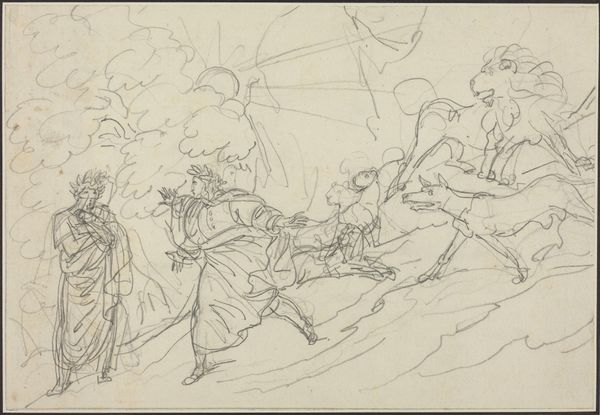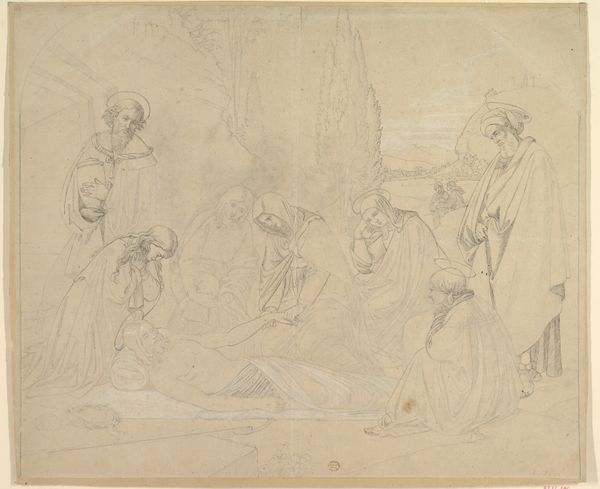
Copyright: Public Domain
Editor: This drawing, "Saul and the Witch of Endor," was created around 1857 by Julius Schnorr von Carolsfeld using pencil on paper. It's currently at the Städel Museum. What strikes me most is the dynamism implied through the rapid, almost frantic, pencil strokes. What elements of its structure and composition do you find particularly compelling? Curator: The dynamic application of the pencil undeniably animates the narrative. Observe the carefully constructed spatial arrangement. The artist has used a layered approach with multiple focal points across a shallow pictorial plane. See how he creates tension using the figure of the fallen Saul in the foreground, juxtaposed with the ethereal apparition summoned by the witch? How do these levels play against one another in terms of affect and composition? Editor: The layered effect really creates a sense of depth despite the use of pencil. But is that spectral figure Saul's apparition or a manifestation of something else? Is it meant to have the same kind of visual presence as Saul and the Witch? Curator: Consider the way the artist utilizes line weight and density. The figures in the foreground possess a solidity absent in the spectral figure of Samuel, lending it an appropriately otherworldly quality. And the stark difference in line weight makes the foreground characters seemingly heavier, as the composition almost pulls the figures downwards to the floor of the work. Would you agree? Editor: Yes, the difference in line weight makes the figures feel grounded, or ungrounded. It directs our eyes through the picture plane to better understand the drama of the piece. Thanks, that was really enlightening! Curator: A vital example of the inherent expressiveness found even within preliminary sketches!
Comments
No comments
Be the first to comment and join the conversation on the ultimate creative platform.
